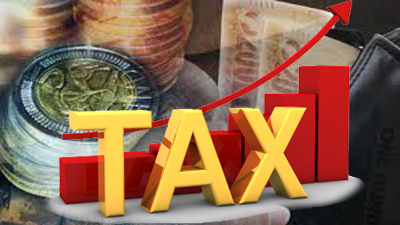The 2018/19 financial year saw in various tax increases. The changes included a higher income taxes and an increase in the rate of Value Added Tax (VAT). The maximum rate of income tax rose to 45% (from 41%) and VAT rose from 14% to 15%. Various additional taxes also rose in the form of ‘sin taxes’, fuel and road levies etc.
Taxation impacts on socio-economic groups differently and the financial year started with widespread concerns about how the VAT increase would impact on poor households. While the increased VAT rate will impact on the material well-being of all households low income groups are thought to benefit from the exemption of some basic goods from VAT.
Consumers taking advantage of the VAT exemptions are able to limit the impact of the VAT increase on their finances. Despite this even low income groups incur additional taxes when they purchase fuel and energy or items on which “sin taxes” have been imposed (cigarettes, alcohol etc.).
An analysis of consumption patterns shown by StatsSA’s Living Conditions Survey show that even the poorest households are paying significant taxes to the state. Almost one-fifth of the value of purchases made by the poorest 10% of households (i.e. those households with an income of less than about R15 000 a year) are taxes.
In other words if these taxes were not incurred the consumption of the poorest households could increase by 20 percent. Most of the taxes incurred by purchasing goods and service is in the form of VAT and the balance can be attributed to levies, duties etc.
All households, irrespective of economic standing pay approximately the same amount of consumption taxes. 18 percent of the value of the goods and services purchases of the poorest 10% of households can be attributed to consumption taxes. By contrast 17% of the value of goods and services purchased by the wealthiest 10% of households can similarly be be attributed to consumption taxes.
The wealthiest 10% of households are those with an income of more than about R300 000 a year. Households with an income of R3 500 a month (the equivalent of the envisaged minimum wage) will pay 17% of that income to taxes.
The available data suggests that consumption taxes are slightly regressive i.e. the rich pay a little less (as a proportion of the consumption) than the poor do.
However only people earning more than R78 000 a year incur income taxes. This ensures that income taxes are largely limited to the richest 30% of households (those households earning more than R150 000 a year). Income taxes are placed on earnings and supplement the taxes incurred when purchasing goods and services. People earning the minimum wage fall below the income tax threshold.
Income taxes are progressive: the more an individual earns the more tax they pay as a percentage of that income. Currently the maximum income tax rate is 45%. This tax rate (the marginal tax rate) impacts only on individuals earning more than R1.5 million a year.
Households that incur the maximum tax rate would be thus be paying almost 45% of their income in the form of income taxes and another 18% in the form of consumption taxes. This means that almost two-thirds of their income would be ‘lost’ to taxation.
However very few individual approach the 45% marginal tax rate. On the whole the richest 10% of households pay a marginal income tax rate of just over 31%. This means that 28% of the income earned by them is appropriated by the state in the form of income and consumption taxes.
The graphic below shows the relative income, consumption taxes and income taxes paid by each income decile of the population. Each decile represents 10% of household ordered according to rising income.
Author
-
Multimedia Manager at SABC News · Wits - University of the Witwatersrand






